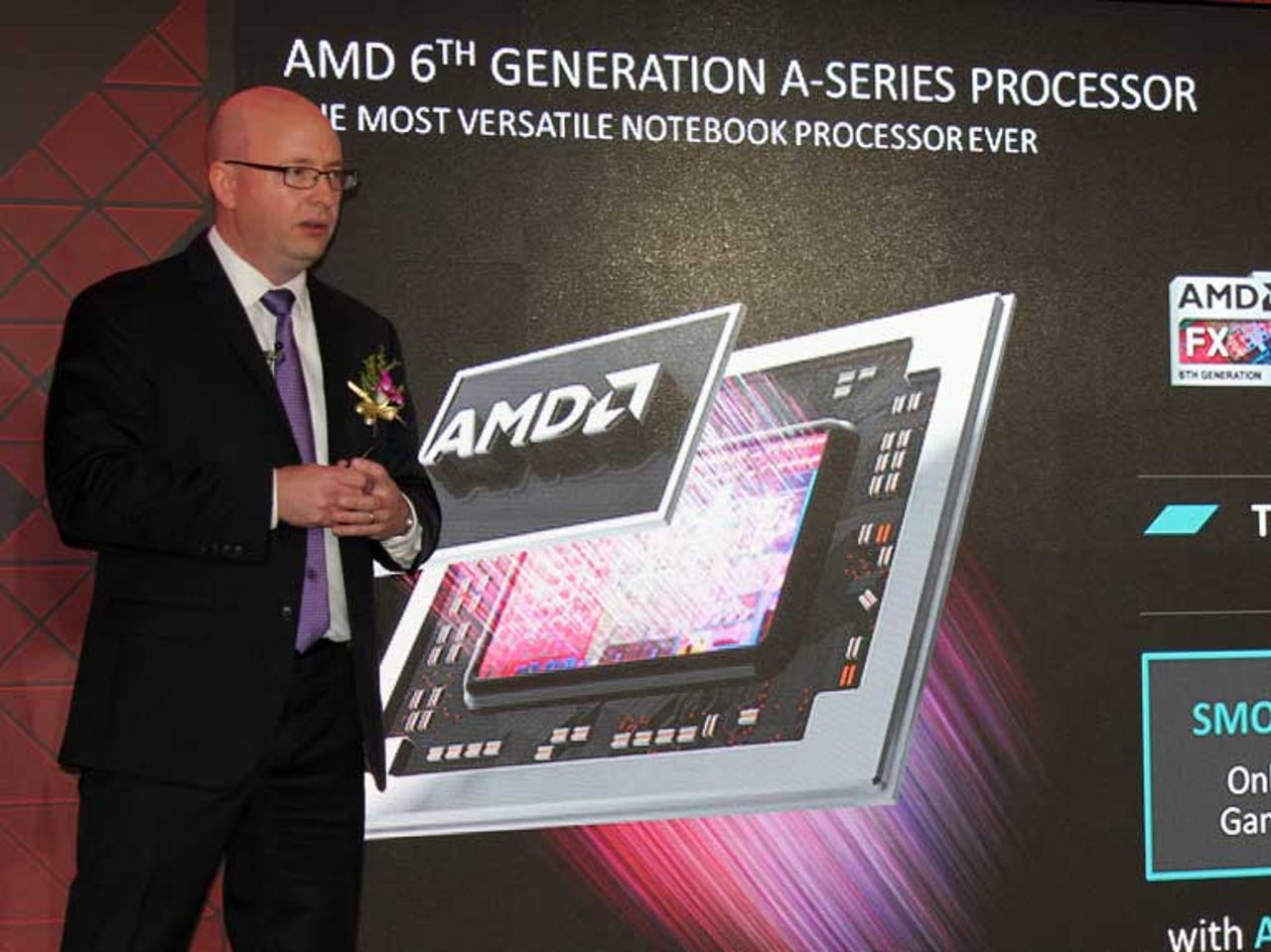Computex 2015: AMD launches Carrizo A-Series processors


After six generations of development, AMD says that it has finally realized the full potential of the APU with the launch of the Carrizo, a true single-chip solution capable of delivering solid gaming performance, high-resolution streaming and longer battery life in mainstream laptops and all-in-one desktops. But one other anticipated product, the new high-end Radeon graphics, was a no-show; instead AMD plans to launch it at E3 later this month.
Computex 2017
The company launched the 6th-generation APUs, branded as the A8, A10 and FX Series, at a press event at Computex in Taiwan. Asus, Acer, Lenovo and Toshiba will offer laptops based on these APUs over the next month or two in time for Back to School, AMD said, with some more creative designs due later in the year. Bai Peng, the head of Lenovo's laptop business, said the company will offer it in several products including the Flex 3, a 2-in-1 device.
While there is a lot of attention to the very low end on the PC market, as well as high-end ultra-thin laptops and 2-in-1s at the opposite end of the spectrum, Carrizo is targeted squarely at the largest part of the market in the middle consisting of $400-$700 mainstream laptops. Kevin Lensing, AMD's Senior Director of Product Management, said Carrizo was AMD's most versatile APU capable of delivering smooth online gaming, and a good user experience with streaming media and other demanding applications in these types of PCs.
The basic architecture of Carrizo consists of up to four Excavator CPU cores and eight new GCN (Graphics Core Next) cores which Lensing said were roughly equivalent to Radeon R6 and R7 discrete graphics. Although it uses the same 28nm process technology as its predecessor, known as Kaveri, Carrizo delivers better CPU performance (instructions per clock), uses 40 percent less power and occupies 23 percent less die area. It also promises up to twice the battery life. AMD said they accomplished this by using a variety of techniques including borrowing some high-density libraries from its GPUs to make the CPU cores both smaller, selecting the right mix of low-power and high-performance transistors, and turning off parts of the chip when they aren't needed.
The changes freed up space to add more features to the APU including what Lensing called a "massive investment in multimedia hardware," in particular HEVC H.265 hardware decoding, and for the first time, the integration of the Southbridge (I/O) making it what AMD called the first performance SoC. "This is sort of the ultimate realization of the APU that we have been working on for six generations," Lensing said.
The Carrizo lineup includes both 15-watt and 35-watt APUs, but the biggest performance gains are in the lower power chips. In comparison to Kaveri, the CPU performance has increased 4-15 percent. But graphics performance has increased 10-15 percent on the 35W APUs and 65 percent on the 15W ones.
As always, one big focus for AMD is on gaming. The arrival of Windows 10 will be an inflection point, Lensing said, because DirectX 12 is a far more efficient programming interface, which will allow developers to deliver better games on the same hardware. Roanne Sones, a general manager in Microsoft's Operating Systems group, said gaming was "very important" for Windows 10 adding that they have seen impressive performance improvements with Carrizo APUs and DirectX 12. She highlighted other important features such as multi-adapter for using both on-die and discrete graphics, better support for high-resolution monitors and multi-monitor setups, and AMD's work on higher refresh rates, HEVC hardware and longer battery life.
During the event, AMD showed performance tests suggesting indicating that Carrizo delivers higher frames and longer battery life than equivalent Intel Core processors on popular online games such as League of Legends and Dota 2. It also showed how Carrizo can support fluid gaming and simultaneous live streaming to Twitch using the Gaming Evolved client.
Carrizo is also the first PC processor with HEVC H.265 hardware decoding, according to AMD. HEVC, which compresses video down to a smaller size without a visible reduction in quality, is an important feature because 4K video is four times the size of 1080p. HEVC hardware decoding frees up the CPU, delivering better performance and saving battery life. To illustrate this, AMD showed a side-by-side comparison of 4K video playback, which was smooth on a Carrizo APU and looked choppy on an Intel Core processor. The crowd-pleaser was a demonstration of a drone with a Samsung NX1 camera capturing 4K HEVC video transmitted to a laptop with a Carrizo APU and then displayed on a 4K monitor.
These are the first APUs to support HSA (Heterogeneous Systems Architecture) 1.0, a set of hardware and software specifications for leveraging the GPU for general-purpose computing. AMD demonstrated the first HSA 1.0 application, Looking Glass, which uses the GPU to perform face detection in videos. AMD developed Looking Glass internally, and we are unlikely to see any commercial HSA 1.0 apps since there aren't any other processor out there that support it, but OpenCL 2.0 apps will get many of the same benefits on Carrizo APUs.
The surprise was that AMD will did not announce its next-generation Radeon GPUs. That announcement will take place on June 16 at the E3 in Los Angeles.
These will be the first GPUs to employ High-Bandwidth Memory (HBM), a stack of DRAM connected with through-silicon vias and placed close to the GPU on a silicon interposer in the same package. Matt Skynner, Corporate Vice President and General Manager of Products, said that HBM will allow then to create much smaller graphics cards. "That will enable small form factor gaming machines that are really, really cool," Skynner said. AMD CEO Lisa Su held up an HBM chip to emphasize that the technology is real.
The new high Radeon GPUs will compete with Nvidia's Titan X and the GeForce GTX 980 Ti announced earlier this week.